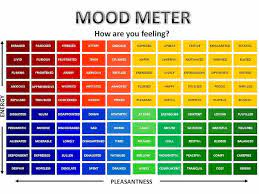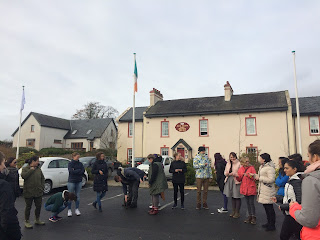It was the beginning of summer and my colleague, Chris, let me know about the call for participation for the training course "Like the story" by the organisation Active Youths of Florina. "I thought you might be interested", he messaged me. And indeed I was. A general description of the course included the following - "key phrases" for me: "empower the young people to be critical of their information intake and source", "explore the concept of storytelling and different techniques", "urban legend", "transformative theatre", "challenging stereotypes", "common values","social diversity", "migration", "refugees","social media". I really couldn't be more interested in a course, since I have been dealing with all these issues through projects at school for the past few years. I had some experience but experience can never be enough! So I applied. And I was chosen. And I have to say this was the best thing I had done for my professional development in years!
Although the course itself is what matters most, I would describe the programme in general, because it was a superb experience from every aspect!
The participants
Thirteen countries participated in the course, two participants from each country. Ramona and Max from Germany, Anna and Kateryna from Ucraine, Mert and Hatice from Turkey, Flavia and Mona from Romania, Irina and Natalia from Russia, Mariam from Georgia-unfrotunately the other partcipant couldn't make it, Nicole and Ronja from Finland, Akylas and I from Greece, Kristel and Stewen from Estonia, Imane and Adib from Morocco, Janos and Kata from Hungary, Gayane and Syuzanna from Armenia. Also Ireland was represented by Vivian, who was waiting for us at the venue.
The venue
The course took place in East Clare Golf Village, a beautiful, tranquil place in the middle of the Irish countryside.The participants stayed in big, two-storey, fully equipped houses. The sessions took place in a big room in the central building-and when the weather was good we did some activities outside- and all meals, except breakfast, in a separate house in the same area. All meals were homemade-delicious Irish bread, as well-by a former member of Fishbowl Youth!
The food
Another thing that contributed to making this experience memorable was the food . The cook made sure that the food was hot, varied and tasty every single day. She even prepared homemade Irish bread for us- plus she was willing to give us the recipe- and delicious desserts every evening. A very original idea that worked really well was the international breakfast. Each house hosted breakfast every day, which was prepared by participants of 3 or 4 different countries. They had to make the traditional breakfast of their countries. This was a brilliant idea as we had the chance not only to start our day hanging out with each other and socializing, but also to try so many different tastes from so many different countries.
The organisers
Fishbowl Youth was the host organisation. Alan was responsible for taking care of every single detail and he did really well. He was there at the coffee breaks, making sure hot coffee, tea, juice and food was on the spot. He always asked if there was anything the houses were short of and provided everything needed. He even did some shopping from the grocery when someone had a special request. All in all, he was very helpful in all cases. Moreover, he shared his love for guitar playing more than once and offered us moments of authentic Irish entertainment.
The trainers
Sophie and Eelin were absolutely fantastic! And I am not just saying this. The girls were well trained, experienced, with deep knowledge of their subject. They cooperated smoothly not only with each other but with the participants, as well. They were friendly, helpful and inspiring. They created the right atmosphere for contribution and they made everyone feel at ease. They fuelled creativity and boosted the group's dynamics! It was such a pleasure working with them!
The course
Day 1: On day 1 we had to focus on "getting to know" one another and "team building" activities.We were also introduced to the programme's activities, aims and objectives in detail. Among other things we all had to give a brief history of our names and how or why we got these names, which I found so interesting, and complete a 60-minute challenge in groups. What I will certainly remember for the rest of my life is talking to myself in front of the window, part of the challenge and one of the funniest things asked!Other interesting things included in the challenge were: "imitate the final scene of Dirty Dancing", "bring back Michael Jackson (from the dead)" and so on.
Day 2: Day 2 was mostly about "borders". We tried to define the term "borders" and what it means to us and we discussed if its meaning has changed through the years or not. The activity was called
"It's a small world" and it was made very clear that we are all citizens of the world. Because of the places we have visited or the places we want to visit, because of our parents' or our grandparents' origins or just because that's the way we should feel especially in our days. A number of factors today have made it easier for people to move from one country to another, when they want to and even when they are forced to . We talked about all the reasons that may contribute to people leaving their country, that is economic reasons, political reasons, social reasons and ecological reasons. We also had to share our knowledge for terms like immigration, emigration, refugee, expat, asylum. Last but not least we listed a number of reasons why we would suggest someone to move to our country. Later on the day we talked about exploring and sharing values. This is vital when we want to build a common ground of values, which in turn is critical when we want to boost solidarity and accepting diversity.
Day 3:
On day 3 we focused on Urban legends, where we find them and how we can recognise them. We discussed some common characteristics and we also talked about click baiting and how we can avoid false news and support young people to critically analyse what they read online esp. stories in social media. Participants experienced how a story can change when retold from one person to another and had to prepare a poster with an attractive ( but often misleading) title which would attract many clicks online. After lunch we listened to Abigail's story and we in groups had to rank the 5 characters of the story from worst to best according to their values, beliefs, attitudes and behaviours. There was a heated debate in each group and some groups- for instance,ours- weren't able to make a final decision for their ranking. I think, this was a good lesson to everyone that the way we see and judge others, their values, beliefs, attitudes and behaviours tells a lot about the way we are, our values and beliefs, our attitudes and behaviours. It also taught us that good and bad is a very relative notion, sometimes very difficult to tell from each other.
Day 4:
Day 4 was about stories. How stories can form beliefs and stereotypes according to the perspective they are told. How powerful can a single story be. This was illustrated succesfully through the inspiring TED talk by the famous writer Chimamanda Ngozi Adichie,
The danger of a single story. You can watch the talk here:
https://www.ted.com/talks/chimamanda_adichie_the_danger_of_a_single_story Then there was an introduction to transformative theatre and after that we listened to the Bremen story and we had to retell and recreate the story from a different perspective. The aim of this activity was to try and see the different sides of the same story. Later on we had to perform the story, which was actually one of the most enjoyable activities of the course. We then discussed the ladder of inference and how we observe, form beliefs and draw conclusions and all these lead to our actions. Finally, we made an exhibition of our collage self portraits.
Day 5:
Our last day was mostly about reflection, evaluation and wrapping up of the course. We all had to reflect on what we had experienced during the past days. We had to complete the "shield", put some thought to what we had learnt, what we still needed to learn, where and how we could use it and what might make it harder for us to use what we had learnt. We also had to create a song meddling different songs from 4 decades to perform at the farewell party in the evening.Also, we all talked about our organisations and talked about future collaborations or exchanges. Last but not least, we all left post-it notes for one another with comments on our self-portraits. In the evening, we gathered in a house to perform our songs, give youth passes to one another and party.
*I should not omit refering to all the energizers and outside activities we did which gave a refreshing touch to our sessions. There was such a variety that I really looked forward every time to see what new we would do.
Our day out to Mountshannon:
On our fourth day we visited Mountshannon. Everyone loved this idyllic place by the lake. We walked around the place going shopping and taking photos. Later we went to a local restaurant to have delicious pizza and wine. There was a festive atmosphere and after our dinner we went on with songs and dances from each country. Alan performed some Irish songs with his guitar and we had a great time there. The entertainment went on with a visit to the local pub to get a taste of Irish beer and the traditional gathering around the fireplace telling stories and jokes.
All in all, this course was an unforgettable experience from every aspect. It was beneficial not only for my professional development but also for the expansion of my PLN. It will remain in my memory for many years and I will make use of many things I learnt there in my job.
P.S. I wrote about my experience from memory mostly, so please forgive any omissions, mistakes or twists of memory.
These are some photos from the course.



























